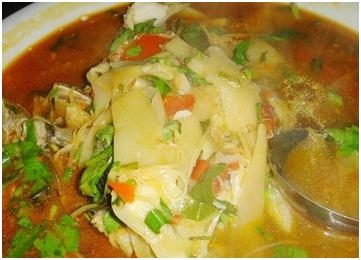代寫game of Bingo cards
時間:2024-02-19 來源: 作者: 我要糾錯
The game of Bingo uses bingo cards which are made up of a top row of the letters B, I, N, G, O with a 5x5 grid of 24 numbers underneath (there's 25 spaces but the middle space is pre-filled with an 'X'). A text example of a typical bingo card is below
B I N G O
8 21 35 60 62
1 28 39 59 72
13 29 X 46 67
2 26 34 55 70
7 20 40 51 63
Note that each column has a restricted set of values that it can contain (see the BingoColumn data definition below). Furthermore there is no set ordering to the numbers within a column (i.e. they are not necessarily in ascending or descending order).
The game of Bingo is played by slowly replacing the numbers with X values as those numbers are called out. For example the referee/announcer could start by saying 'G51' and the card above would be updated to look like
B I N G O
8 21 35 60 62
1 28 39 59 72
13 29 X 46 67
2 26 34 55 70
7 20 40 X 63
Sometimes the announcer will call out a number that is not present on the card and then nothing would happen. For example if the announcer called 'B15' then the card above would remain unchanged.
For the purposes of this question let us define the following:
## a BingoVal is (anyof 'X' Nat)
## a BingoColumn is a (list Str BingoVal BingoVal BingoVal BingoVal BingoVal)
## Requires:
## the string must be only one of 'B','I','N','G','O'
## each BingoVal, when a Nat, must follow the interval restrictions:
##
## - if the string is 'B' the Nat can be any value within 1-15
## - if the string is 'I' the Nat can be any value within 16-30
## - if the string is 'N' the Nat can be any value within 31-45
## and the third BingoVal is always an 'X'
## - if the string is 'G' the Nat can be any value within 46-60
## - if the string is 'O' the Nat can be any value within 61-75
##
## the numbers in a BingoColumn cannot repeat
and finally
## a BingoCard is a (listof BingoColumn)
## Requires:
## the length of the list is exactly 5
## the first BingoColumn must have the string 'B'
## the second BingoColumn must have the string 'I'
## the third BingoColumn must have the string 'N'
## the fourth BingoColumn must have the string 'G'
## the fifth BingoColumn must have the string 'O'
For example a valid BingoCard would be
[['B', 8, 1, 13, 2, 7],
['I', 21, 28, 29, 26, 20],
['N', 35, 39, 'X', 34, 40],
['G', 60, 59, 46, 55, 51],
['O', 62, 72, 67, 70, 63]]
To help make the game "playable" we will define one more type representing the values called out by the announcer:
## a CallVal is a string
## Requires:
## the length of the string is either 2 or 3
## the first character is one of 'B', 'I', 'N', 'G' or 'O'
## the remaining charaters represent the numbers 1 through 75 such
## that when paired with first character will follow the
## interval restriction of a BingoColumn
For example, "B8" and "N33" are valid CallVals but "B20" is not.
Your task it to create the function update_bingo_card which consumes crd (of type BingoCard) and lon (of type (listof CallVal)) and:
updates/mutates crd for each CallVal according to the rules of Bingo previously mentioned. Note it should not mutate lon in the process.
when all updates are done (i.e. there are no more CallVals to use) prints the updated BingoCard.
returns the number of CallVals that were not used during the update process (i.e. the complement of the number of X values that were added).
The format of the printed BingoCard should match the description below (to help follow the listed rules here is an example)
B I N G O
8 21 35 60 62
1 28 39 59 72
13 29 X 46 67
2 26 34 55 70
7 20 40 X 63
each line should be 15 characters in length
the first line contains the letters B, I, N, G, and O each with a single space on either side
the remaining lines correspond to the values present within each BingoColumn. Note that when printed each BingoVal is 3 characters long such that:
the first character is either a blank space or a number
the second character is either a number or X
the third character is always a blank space
For example:
crd1 = [['B', 8, 1, 13, 2, 7], ['I', 21, 28, 29, 26, 20],
['N', 35, 39, 'X', 34, 40], ['G', 60, 59, 46, 55, 51],
['O', 62, 72, 67, 70, 63]]
list1 = ["B12","I22","B8","G55","N31","B8"]
update_bingo_card(crd1,[]) => 0 #and prints...
B I N G O
8 21 35 60 62
1 28 39 59 72
13 29 X 46 67
2 26 34 55 70
7 20 40 51 63
update_bingo_card(crd1,list1) => 4 #and prints...
B I N G O
X 21 35 60 62
1 28 39 59 72
13 29 X 46 67
2 26 34 X 70
7 20 40 51 63
(the second example returns 4 because 4 out of the 6 CallVals were not used)
Restriction
Do not import any modules other than math and check. You are always allowed to define your own helper/wrapper functions, as long as they meet the assignment restrictions. Do not use Python constructs from later modules (e.g. fstrings, dictionaries, loops (for or while or others), zip, functions with default parameters, left hand slicing (assignments of the form L[:] = ... where L is a list), sorted, anything with set or enumerators, ord, chr, try and except).
Do not mutate passed parameters for required functions unless otherwise told to.
Use only the functions, methods, operations, constants and keywords as follows:
abs, len, max, min, sum and range (however keyword parameters for these functions are not allowed and sum should only consume a single list parameter)
Any method or constant in the math module
Any basic arithmetic or comparison operations (+, -, *, /, //, %, **, <, <=, ==, != >, >=)
Any basic logical operators (not, and, or)
These typecasting operators: int(), str(), float(), bool(), list(), and type()
if statements (including elif and else)
String or list slicing and indexing as well as string or list operations using the operators above
The in operator and any string or list methods listed below except for using specified keyword parameters key and reverse in the sort method (which will be introduced in module 8)
input and print as well as the formatting parameter end and method format. Note that all prompts must match exactly in order to obtain marks so ensure that you do not alter these prompts.
Recursion
Abstract List Functions map and filter and the keyword lambda
Read each question carefully for additional restrictions.
請加QQ:99515681 郵箱:99515681@qq.com WX:codehelp
標簽:
掃一掃在手機打開當前頁
注:本網條致力提供真實有用信息,所轉載的內容,其版權均由原作者和資料提供方所擁有!若有任何不適煩請聯系我們,將會在24小時內刪除。
無相關信息 昆明生活資訊















